In today’s fast-paced world, sleep is something many of us struggle with. Whether it’s due to stress, anxiety, or just a busy mind, falling asleep can often feel like a daunting task. The good news is that yoga, a practice known for promoting relaxation and balance, can be a powerful tool to help you wind down, release built-up tension, and prepare your body and mind for restful sleep.
By incorporating calming yoga poses into your evening routine, you can create the ideal environment for peaceful sleep. Below are 5 yoga poses specifically chosen to help you relax and sleep better at night.
1. Child’s Pose (Balasana)
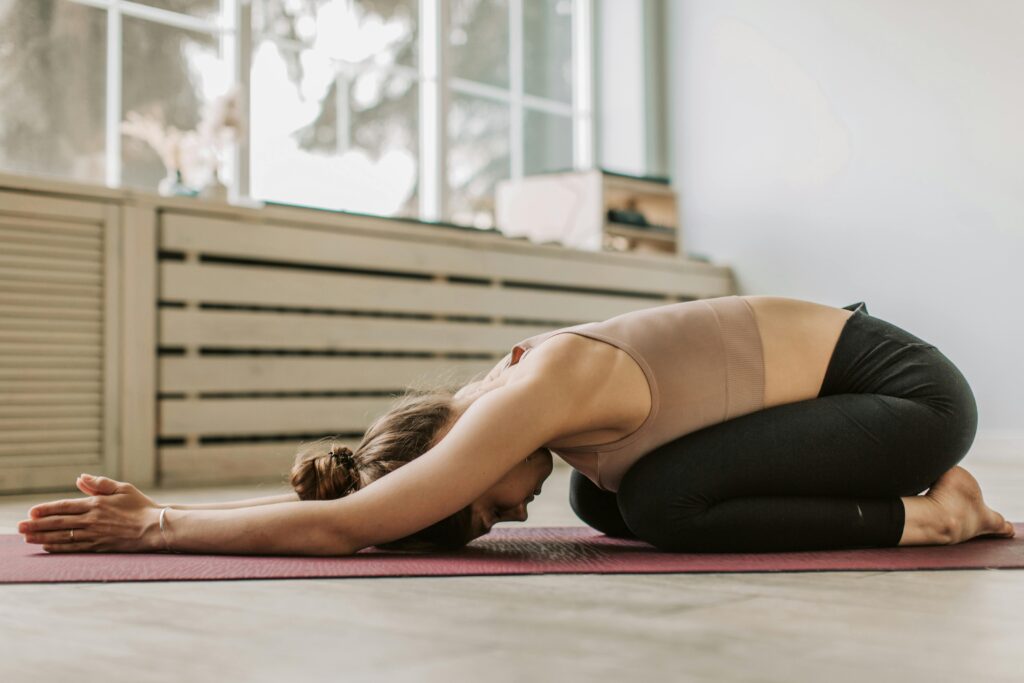
Why It Helps:
Child’s Pose is a grounding posture that helps calm the mind and stretch the back, hips, and thighs. It gently encourages the body to surrender, which is key when preparing for sleep. The gentle forward fold allows you to reconnect with your breath and relax your nervous system.
How to Do It:
- Begin on your hands and knees in a tabletop position.
- Spread your knees wide apart, keeping your big toes touching.
- Sit back onto your heels, lengthening your spine as you lower your torso toward the ground.
- Rest your forehead on the floor and stretch your arms forward on the mat (or place them by your sides for a more restful version).
- Close your eyes and focus on slow, deep breaths, inhaling and exhaling fully.
- Hold the pose for 1 to 3 minutes, allowing yourself to relax into the stretch.
Why It Works for Sleep: This pose not only stretches the body but also invites a deep sense of relaxation. The act of lowering your head below your heart helps calm the nervous system, promoting tranquility and readiness for sleep. Child’s Pose also helps to release tension in the lower back and neck, which often contributes to discomfort while lying in bed.
2. Legs Up the Wall (Viparita Karani)
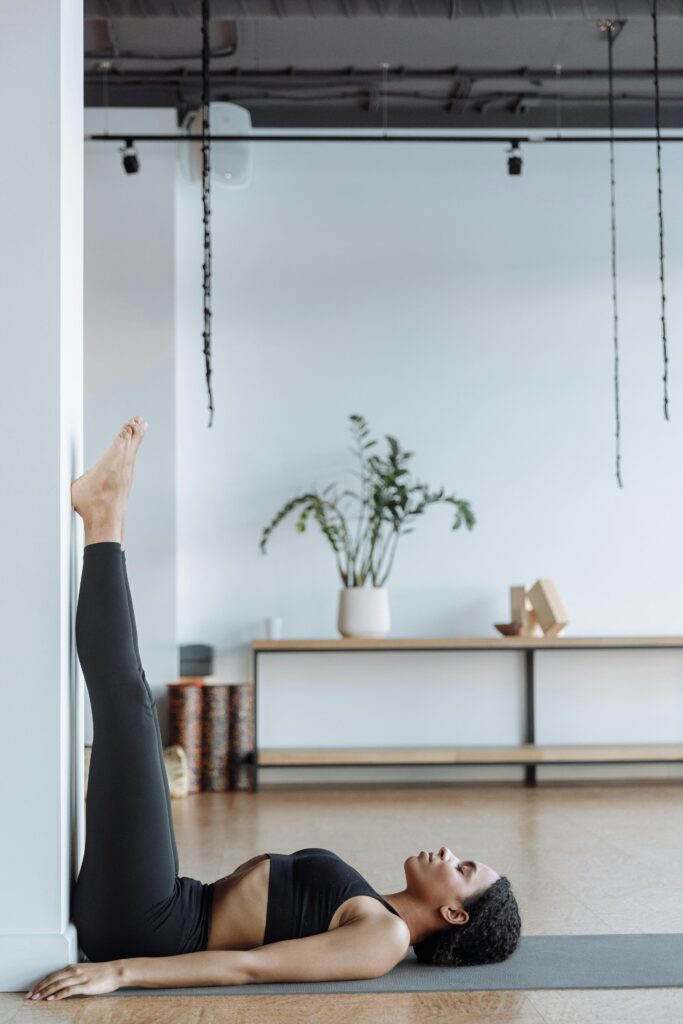
Why It Helps:
Legs Up the Wall is an incredibly restorative pose that is perfect for winding down after a long day. By elevating your legs, this pose encourages better circulation, reduces swelling, and calms the mind. It is ideal for those who experience tired, achy legs or lower back discomfort from standing or sitting all day.
How to Do It:
- Sit with one side of your body against a wall, then lie down and swing your legs up the wall.
- Your body should form an L-shape, with your legs resting vertically against the wall and your back on the floor.
- Relax your arms by your sides, palms facing upward.
- Close your eyes and take long, deep breaths, focusing on releasing any tension in your body.
- Stay in this position for 5 to 10 minutes. You can use a pillow or bolster under your hips for additional support and comfort.
Why It Works for Sleep: This pose has a grounding effect, calming the nervous system and reducing stress. It allows the body to reset by reversing the effects of gravity, improving circulation and helping to clear the mind. In addition, this restorative position reduces the tension that can make it difficult to relax and fall asleep.
3. Forward Fold (Uttanasana)
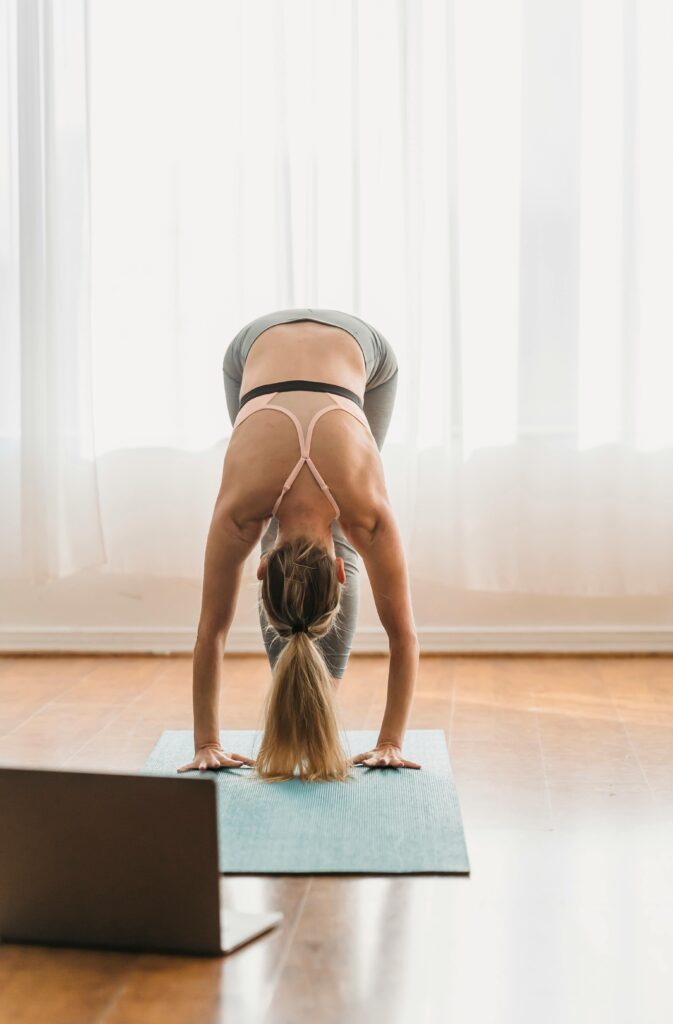
Why It Helps:
The Forward Fold is a wonderful pose for stretching the hamstrings, back, and neck. It also promotes deep relaxation by calming the nervous system and encouraging mindfulness. By focusing on the breath and releasing tension in the body, this pose can significantly reduce the stress that often hinders restful sleep.
How to Do It:
- Stand with your feet hip-width apart and knees slightly bent.
- Slowly hinge at your hips, allowing your upper body to fold forward, bringing your chest toward your thighs.
- Let your head drop toward the floor, and relax your neck and shoulders.
- If possible, touch your feet or hold onto opposite elbows.
- Breathe deeply, and stay in the pose for 1 to 3 minutes.
Why It Works for Sleep: Forward folds help release tension in the spine, shoulders, and hamstrings, which often hold stress from the day. By lengthening the spine and relaxing the upper body, the Forward Fold creates a calming effect that helps the body prepare for rest. The inversion aspect of the pose also improves blood flow to the brain, which can aid in mental clarity and stress reduction.
4. Supported Savasana (Corpse Pose)
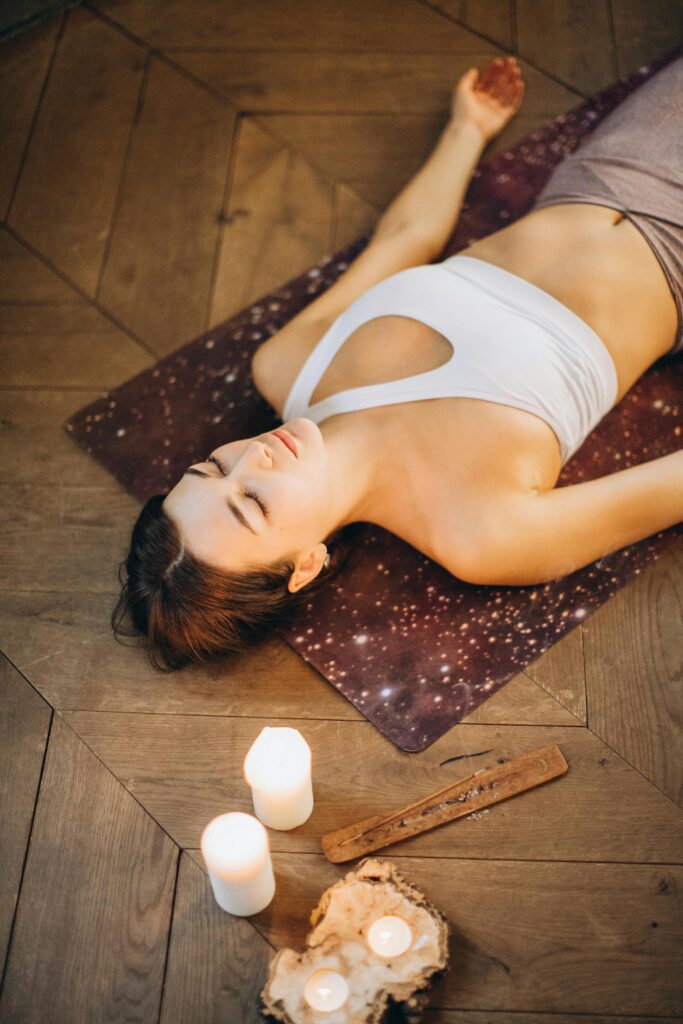
Why It Helps:
Savasana, or Corpse Pose, is typically done at the end of a yoga practice, but it’s also a fantastic way to prepare your body for sleep. By lying still and completely relaxed, this pose allows your body to integrate the benefits of the practice and signals to your nervous system that it’s time to let go and rest.
How to Do It:
- Lie flat on your back with your legs extended and arms by your sides, palms facing upward.
- To make this pose more comfortable and supportive, place a bolster or cushion under your knees to take pressure off the lower back.
- Close your eyes and bring your attention to your breath.
- With each exhale, feel yourself sinking deeper into the mat, releasing tension from every muscle in your body.
- Stay in this pose for 5 to 10 minutes, allowing your mind to quiet and your body to fully relax.
Why It Works for Sleep: Savasana helps to reduce anxiety and stress, two of the most common causes of sleep disturbances. This final relaxation pose encourages your body to relax deeply and consciously, giving your mind and muscles a chance to reset before bedtime. The extended relaxation time in Savasana is perfect for preparing the body for a full night’s rest.
5. Seated Forward Fold (Paschimottanasana)
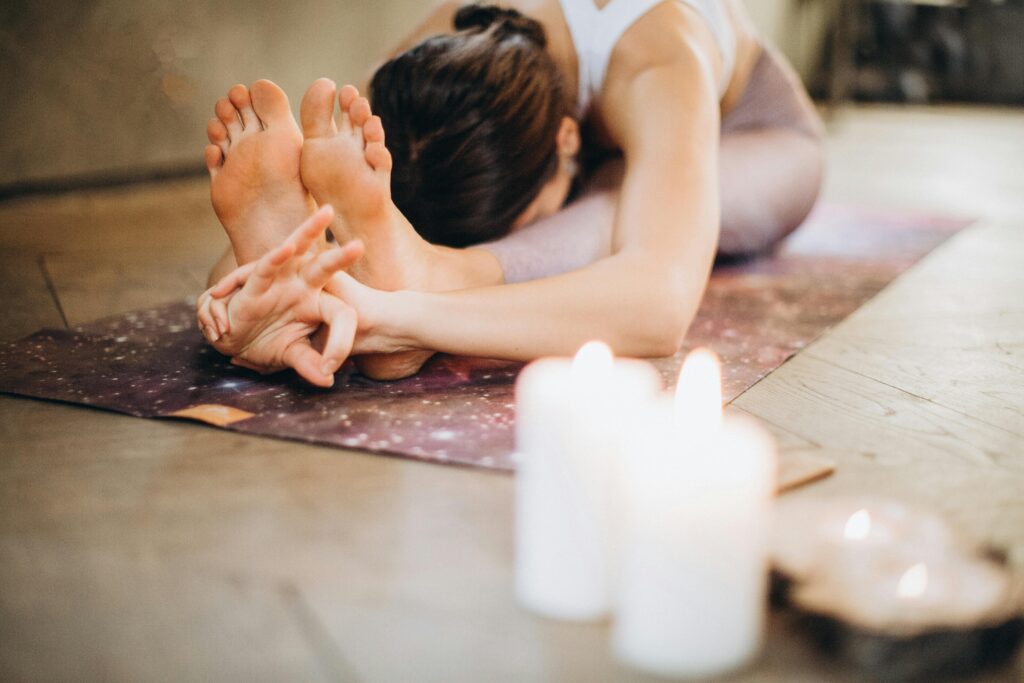
Why It Helps:
This seated forward fold stretches the spine and lengthens the hamstrings, promoting overall relaxation. This pose is especially beneficial for people who hold tension in their lower back and hips. It encourages a feeling of calmness, helping to prepare your body for sleep.
How to Do It:
- Sit on the floor with your legs extended straight in front of you.
- Flex your feet and inhale to lengthen your spine.
- As you exhale, hinge forward from your hips, reaching your hands toward your feet, ankles, or shins.
- Relax your neck, shoulders, and face as you fold deeper, but do not force your body into the stretch.
- Stay here for 1 to 3 minutes, breathing deeply and releasing tension.
Why It Works for Sleep: The Seated Forward Fold stretches and relaxes the lower back, hips, and legs, all areas where stress and discomfort can accumulate. This pose encourages deep breathing, which can help slow down the heart rate and calm the mind, signaling to your body that it’s time for rest.
Final Thoughts
Incorporating these 5 calming yoga poses into your nightly routine can significantly improve your sleep quality. By targeting both the body and mind, yoga helps alleviate physical discomfort, calm stress, and promote relaxation. Whether you’re new to yoga or a seasoned practitioner, these poses are simple yet effective ways to prepare your body for a night of restful sleep.
If you struggle with falling asleep or staying asleep, give these yoga poses a try. Set aside 20 to 30 minutes before bed to unwind, stretch, and breathe deeply. Your body and mind will thank you, and you’ll enjoy the many benefits of a more restful, rejuvenating sleep.
I am involved with a health organization. Since 2017 I work on different health-related projects in various countries. I love it to conscious people about health.
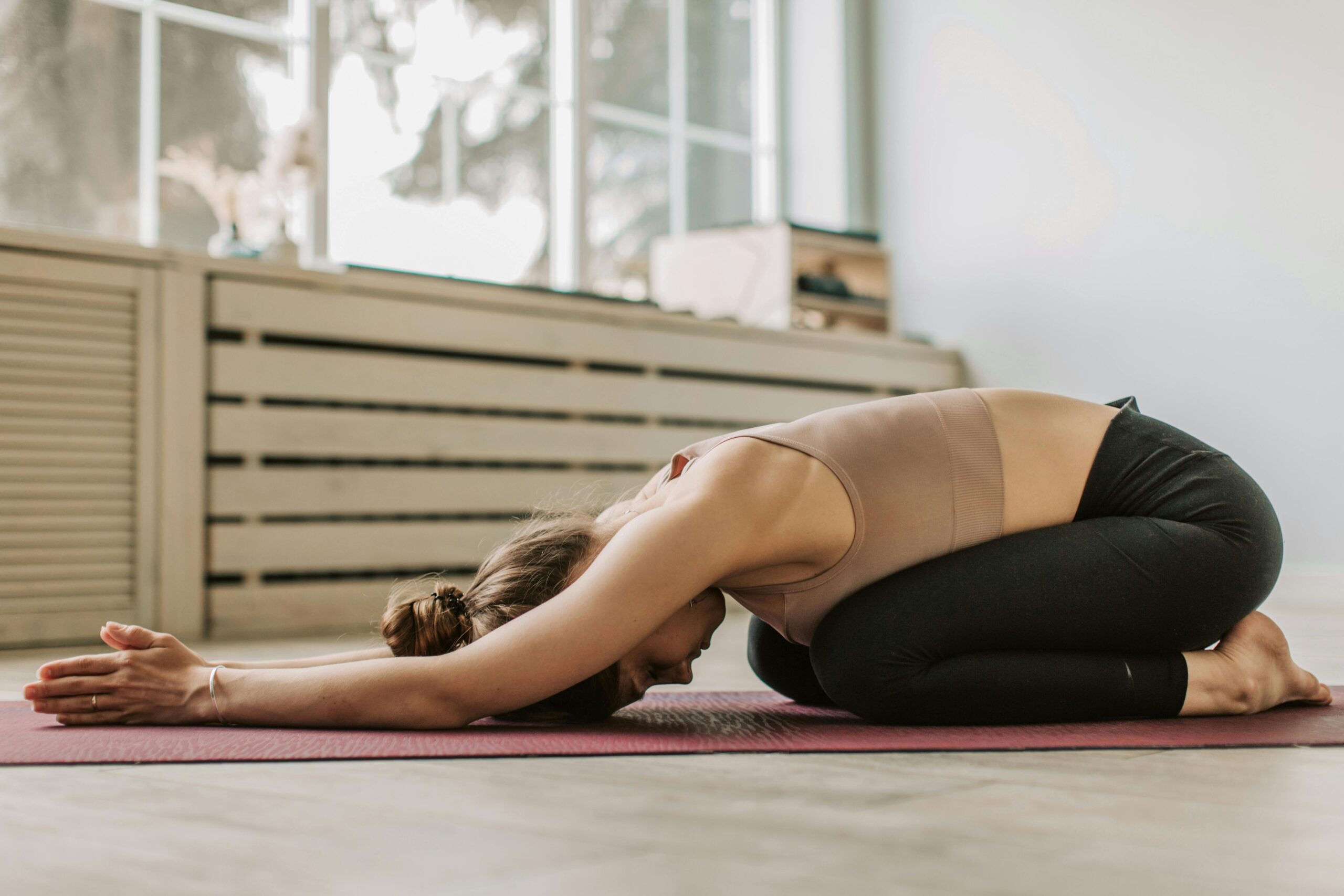
**mind vault**
mind vault is a premium cognitive support formula created for adults 45+. It’s thoughtfully designed to help maintain clear thinking
**sugarmute**
sugarmute is a science-guided nutritional supplement created to help maintain balanced blood sugar while supporting steady energy and mental clarity.
**gl pro**
gl pro is a natural dietary supplement designed to promote balanced blood sugar levels and curb sugar cravings.
**zencortex**
zencortex contains only the natural ingredients that are effective in supporting incredible hearing naturally.
**mitolyn**
mitolyn a nature-inspired supplement crafted to elevate metabolic activity and support sustainable weight management.
**yusleep**
yusleep is a gentle, nano-enhanced nightly blend designed to help you drift off quickly, stay asleep longer, and wake feeling clear.
**prodentim**
prodentim an advanced probiotic formulation designed to support exceptional oral hygiene while fortifying teeth and gums.
**synaptigen**
synaptigen is a next-generation brain support supplement that blends natural nootropics, adaptogens
**vitta burn**
vitta burn is a liquid dietary supplement formulated to support healthy weight reduction by increasing metabolic rate, reducing hunger, and promoting fat loss.
**nitric boost**
nitric boost is a dietary formula crafted to enhance vitality and promote overall well-being.
**glucore**
glucore is a nutritional supplement that is given to patients daily to assist in maintaining healthy blood sugar and metabolic rates.
**wildgut**
wildgutis a precision-crafted nutritional blend designed to nurture your dog’s digestive tract.
**breathe**
breathe is a plant-powered tincture crafted to promote lung performance and enhance your breathing quality.
Hi,
“been” caught my attention; maybe a small typo? Tools like spellace.com have helped me confirm quickly.
Thanks,
Maria Gentry